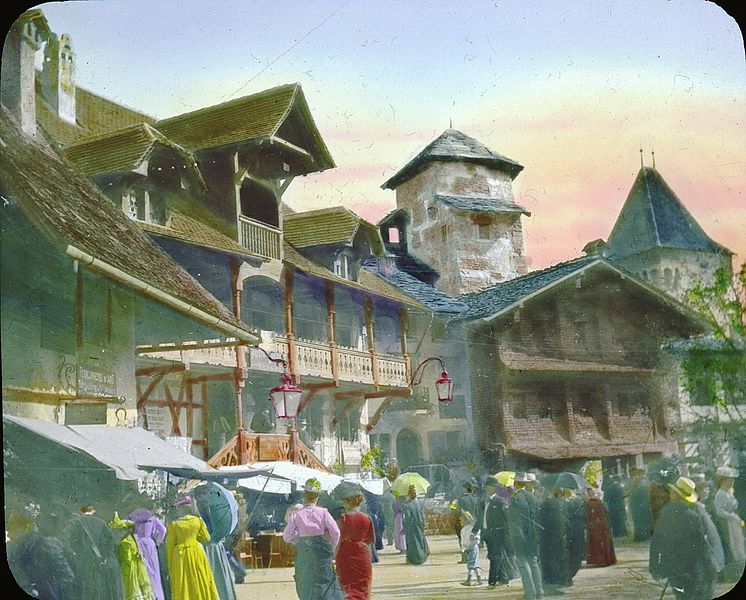Photo: William Henry Goodyear, Paris Exposition: unidentified exterior view, 1900. Brooklyn Museum Archives
How can I not love a book about the V&A, ceramics, the writing life, and the Victorian social reform and aesthetic movements? This is Byatt in top form, with what I think is her best book since (here I’m invoking her chronology in writing, not mine in reading) 1992’s Angels & Insects. (Which is not to say that I didn’t read her collections of tales with immense pleasure, or the last two volumes of the quartet in a white heat of agony, suspense, and fulfillment.) This is a perfectly beguiling exploration of Victorian progressives’ invention and embrace of a modernity which they constructed, in part, out of nostalgia for the “primitive,” the “natural,” and the “childish.” Read on the heels of A Whistling Woman, it’s obvious that this dream of modernity is a recurrent one, and that the nostalgia recurs, too. Watch Byatt evoke To the Lighthouse, Smiles of a Summer Night, Das Rheingold, The Princess and the Goblin, and every creepy thing that’s ever been thought about marionettes–and then send Emma Goldman and Oscar Wilde strolling in–and swoon, swoon, swoon.
There is violence, of course, because this book is about the world and its constructed worlds. The violence is apt, and never less shocking for its aptness.
Byatt newbies are hereby warned to stay away and work up to this book gradually through her more accessible works, unless they actually want to face the challenges of: 1. meeting the inmates of several large Victorian households all at the same time (Byatt kept her character list in an Excel spreadsheet), and learning them all well enough from the very beginning to appreciate the interplay of action and emotion among them; and 2. Byatt’s relentless interest in things and ideas, for which she refuses to compromise with readers who refuse to take an interest in things and ideas. Your interest in the characters and the narrative must be in the context of context itself, by which I mean, the characters live within networks, not only of other characters, but of movements, groups, theories, ideals, and policies. Byatt is a rewarding read because she refuses to be an easy read. In order to appreciate this book, you must look up the Gloucester candlestick, if you don’t know what it looks like, or the paintings of Samuel Palmer; you must look up Ka Cox and Emily Davison; you should learn. And if you do, you’ll come out on the other end not only edified, but also enlightened, and moved, and very, very excited.
Read: August 2010
